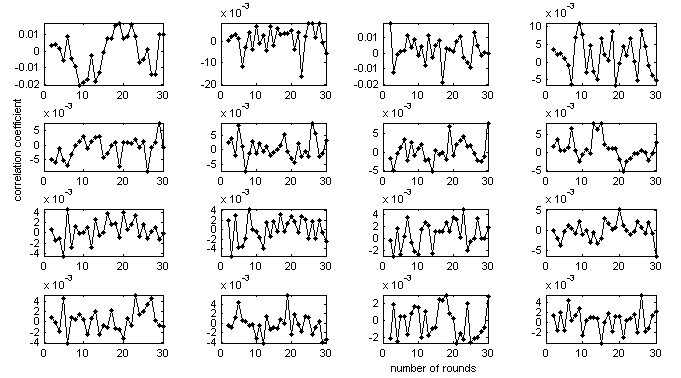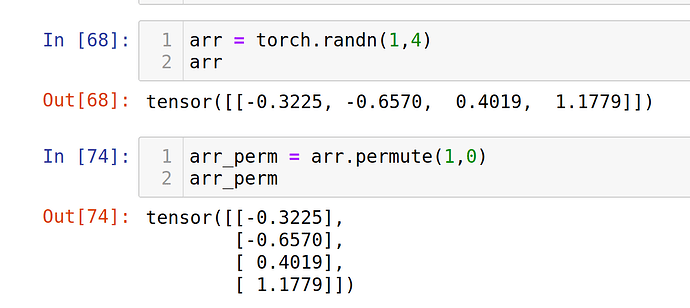

The transpose/swap that I did in may be hard to understand. That might be easier to see if you try to reshape In : np.arange(6).reshape(2,3)Ĭompare that with a transpose: In : np.arange(6).reshape(2,3).transpose(1,0) While reshape of (2,2,3,2) to (2,3,4) is allowed, the apparent order of values probably is not what you want. That is x.ravel() remains the same with reshape. Reshape can be used to combine 'adjacent' dimensions, but doesn't reorder the underlying data. The direct way to get there is to swap the middle 2 dimensions: In : x.transpose(0,2,1,3).shape Numpy has a stack that joins arrays on a new axis, so we can skip the last concatenate and reshape with np.stack((s1,s2)) # or Your example, using numpy methods (I don't have tensorflow installed): In : x = np.array([ Look at the difference between a.view(3,2,4) and a.permute(0,1,2) - the shape of the resulting two tensors is the same, but not the ordering of elements: In : a.view(3,2,4) However, if you permute a tensor - you change the underlying order of the elements. When you reshape a tensor, you do not change the underlying order of the elements, only the shape of the tensor. view: a = torch.arange(24)Īs you can see the elements are ordered first by row (last dimension), then by column, and finally by the first dimension. You can easily visualize it using torch.arange followed by.

the order is column major: [ first, thirdįor higher dimensional tensors, this means elements are ordered from the last dimension to the first. are in row-major ordering: [ first, second The order of the elements in memory in python, pytorch, numpy, c++ etc. Most of the time i am able to get the dimension right, but the order of the numbers are always incorrect.
Permute pytorch how to#
not sure how to split the tensor into x.shape tensors.What_i_want = torch.cat((split1, split2), dim=0).reshape(x.shape, split1.shape, split1.shape)įor the above result, i thought directly reshaping x.reshape() would work, it resulted in the correct dimension but incorrect result. This function is equivalent to NumPy’s moveaxis function. The terminology is taken from numpy : Alias for torch.movedim (). Split2 = torch.cat((split2, split2), dim=1) Yes, this functionality can be achieved with permute, but moving one axis while keeping the relative positions of all others is a common enough use-case to warrant its own syntactic sugar. Split1 = torch.cat((split1, split1), dim=1) Here, i dont really have to actually split it as long as i get the correct output, but it makes a lot more sense to me visually to split it then concat them back together.įor example: # the shape of the splits are always the same So what you probably want instead of reshape is permute(), (or in numpy called transpose) which will actually rearrange the data.Firstly would like to split it into 2 (x.shape) tensors then concat them. Reshaping really just means setting the brackets in different places! Which immediately shows how the image will be completely jumbled. So reshaping to (2, 2, 3) would look like so: ,],]] In pytorch that would looks something like the following array of shape (3, 2, 2): ,],],]] So let's say you have a 2x2 image with 3 color channels. In your particular case this means that consecutive values (that were basically values of the same color channela and the same row) are now interpreted as different colour channels. Note that these tensors or arrays are actually stored as 1d "array", and the multiple dimensions just come from defining strides (check out How to understand numpy strides for layman?). You then seem to reshape it to what you expect would be (height, width, channels) In pytorch you usually represent pictures with tensors of shape (channels, height, width) Which produces the following image as expected :-) By referring to this solution, I now get the following: image = images I think the issue now is with how to represent the image. Not sure if it is a Numpy thing or the way the image is represented and displayed? I would like to also kindly note that I get a different display of the image at every run, but it is pretty much something close to the image displayed below. So, after nice explanation, I have the following: image = imagesĪnd, the image looks as shown below. But, the image displayed looks as shown below. For instance, the dataset I have contains images of cats and dogs. The issue is that the image doesn't display properly. Inputs, labels = inputs.float(), labels.float() Inputs, labels = inputs.to(device), labels.to(device) Train_loader = DataLoader(dataset,batch_size=1,shuffle=True)ĭevice = vice('cuda:0' if _available() else 'cpu')įor i, data in enumerate(train_loader,0):

Permute pytorch code#
I have the following code portion: dataset = trainDataset()


 0 kommentar(er)
0 kommentar(er)
